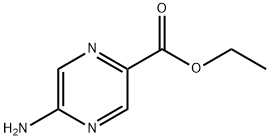The question "What is NaCl?" is commonly asked in contexts like chemistry, biology, or everyday life, as NaCl is the chemical formula for sodium chloride, commonly known as table salt. It is a vital compound used in food seasoning, preservation, and in various industrial processes. Derivative questions could include:
1."What is the role of NaCl in the body?"
2."How is NaCl produced?"
What is nacl?
Related Products More >
-
- 108-80-5
- USD 50.0000
- 50kg
-
- 108-78-1
- USD 4.5000
- 25kg
-
- 4559-86-8
- USD 750.0000
- 170kg
-
- 77182-82-2
- equest For Quotation
-
- 70131-50-9
- equest For Quotation



 沪ICP备2021018848号-5
沪ICP备2021018848号-5

NaCl, or sodium chloride, is a chemical compound made up of two elements: sodium (Na) and chlorine (Cl). It is most commonly known as table salt, an essential substance in daily life, particularly in food seasoning and preservation. Sodium chloride is also widely used in industrial processes, water treatment, and even in medical solutions such as saline. It forms a crystalline structure, which is why table salt is often seen as white and granular.
Why this happens: Sodium and chlorine combine in a 1:1 ratio to form NaCl. The sodium ion (Na⁺) is positively charged, while the chloride ion (Cl⁻) is negatively charged. These oppositely charged ions attract each other, forming an ionic bond. This bond is strong, which is why NaCl has a high melting point and can form solid crystals at room temperature.
Example: In everyday life, NaCl is commonly used to season food like pasta or salads, and it is also essential in preserving meats and fish. It also plays a critical role in various chemical industries for the production of chlorine and sodium hydroxide.
1. What is the role of NaCl in the body?
In the human body, sodium chloride plays a vital role in maintaining fluid balance, nerve function, and muscle contractions. Sodium ions help regulate the volume of extracellular fluid, and chloride ions assist in maintaining the acid-base balance. The body uses sodium and chloride to generate electrical signals that are crucial for nerve communication and muscle contraction.
Why this happens: Sodium ions help to maintain the osmotic balance between cells and their surroundings by controlling water movement into and out of cells. Chloride ions, as part of hydrochloric acid in the stomach, aid digestion by breaking down food. In the blood, sodium and chloride help maintain blood pressure and pH levels.
Example: When you sweat during exercise or hot weather, you lose both sodium and chloride. This is why sports drinks often contain electrolytes like NaCl to help replenish the body’s balance and prevent dehydration and muscle cramps.
2. How is NaCl produced?
Sodium chloride is commonly produced through two methods: mining and evaporation. In the mining method, rock salt is extracted from underground salt deposits through drilling or blasting, then crushed and refined. In the evaporation method, seawater or brine from salt lakes is evaporated in large pans or natural evaporation ponds, leaving behind the salt crystals. This method is more sustainable as it relies on the availability of saltwater.
Why this happens: In both methods, sodium chloride is harvested in a purified form. The mining method is faster but can be more expensive due to the need for large-scale machinery. The evaporation method, on the other hand, is slower but cost-effective, especially when saltwater is abundant in coastal regions.
Example: Large salt production industries, such as those located along coastlines, often use evaporation ponds to produce NaCl. In contrast, rock salt mining operations, such as those in Germany or the U.S., extract salt from underground deposits to meet the demand for road de-icing during winter months.
Precautions in Use or Application:
Health Considerations: While NaCl is essential for health, excessive consumption can lead to health issues like hypertension, kidney problems, or fluid retention. It’s important to monitor sodium intake, especially for individuals with heart or kidney conditions.
Usage in Cooking: While salt enhances flavor, it should be used in moderation. When cooking, it's beneficial to measure the amount of NaCl added to dishes to avoid overconsumption. Opting for reduced-sodium salt alternatives or using natural seasonings can help control sodium levels.
Industrial Use: In industrial applications, such as water treatment or chemical manufacturing, NaCl must be handled properly. For example, in water treatment plants, the right concentration of salt is crucial for effective desalination, while excessive use can affect the environment and nearby water sources.
In its pure form, NaCl is a white crystalline solid. It has a high melting point of 801°C and a boiling point of 1413°C. Sodium chloride is highly soluble in water, and when dissolved, it dissociates into its constituent ions, which makes the solution conduct electricity.
NaCl has numerous applications. It is essential for human nutrition, as it is involved in maintaining fluid balance, nerve function, and muscle contraction. In the food industry, it is used for seasoning and preserving food. It is also widely used in chemical manufacturing, for example, in the production of chlorine and sodium hydroxide through electrolysis. In addition, it is used in de-icing roads in winter because it can lower the freezing point of water, helping to melt ice and snow.